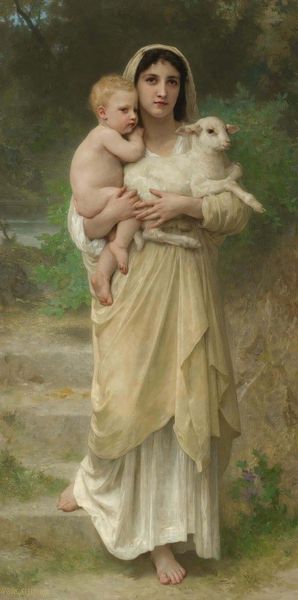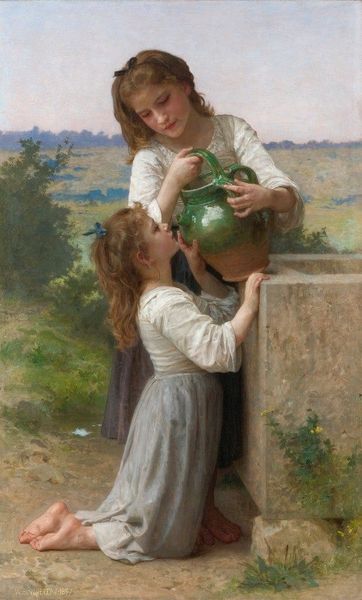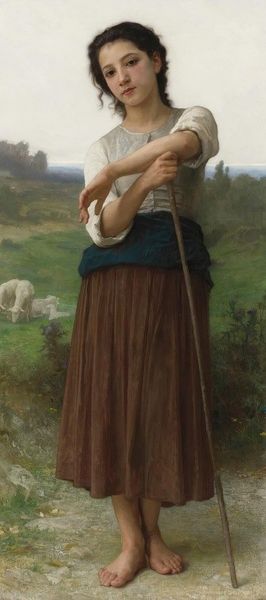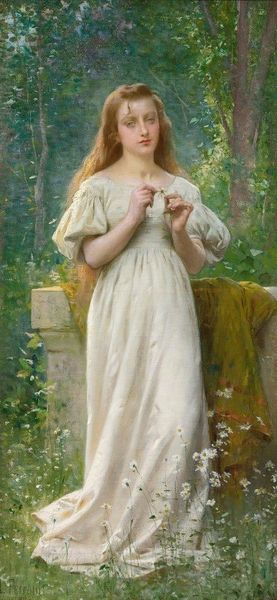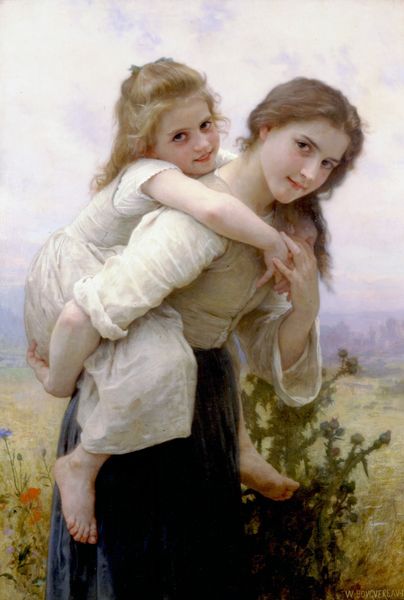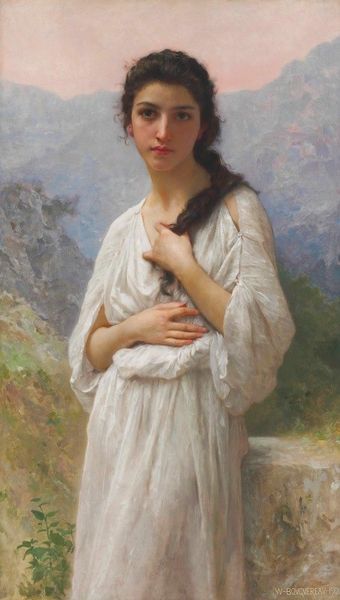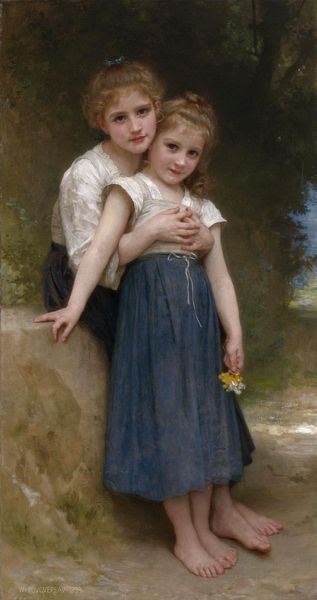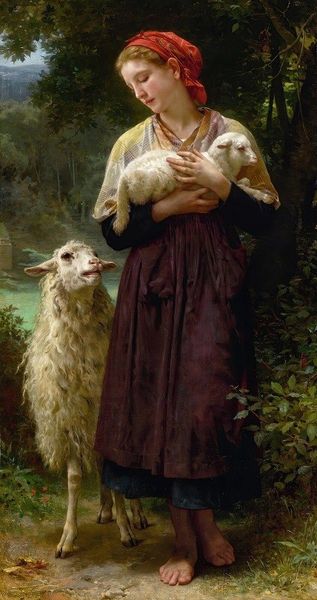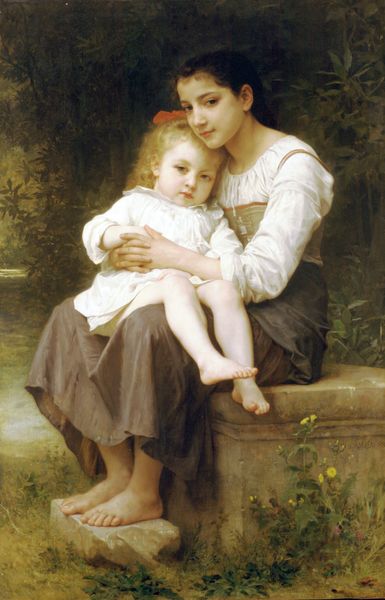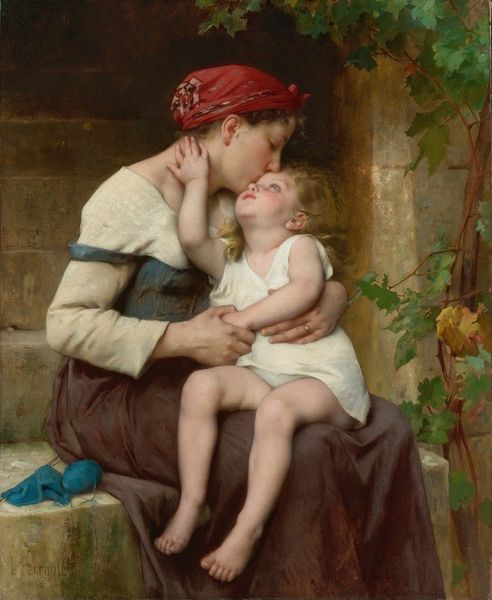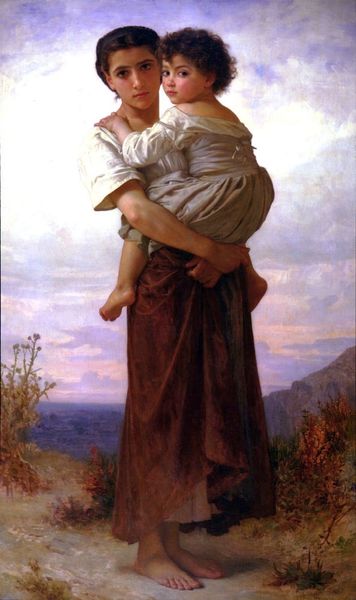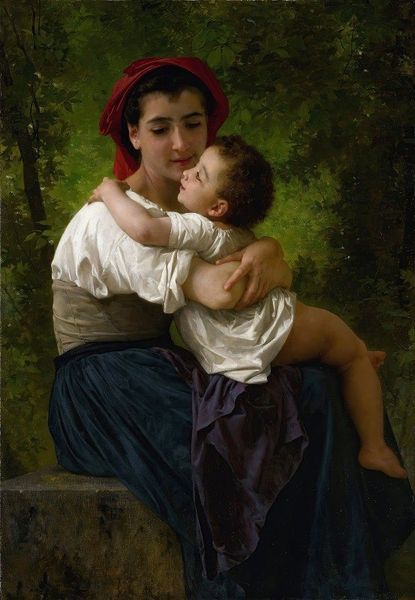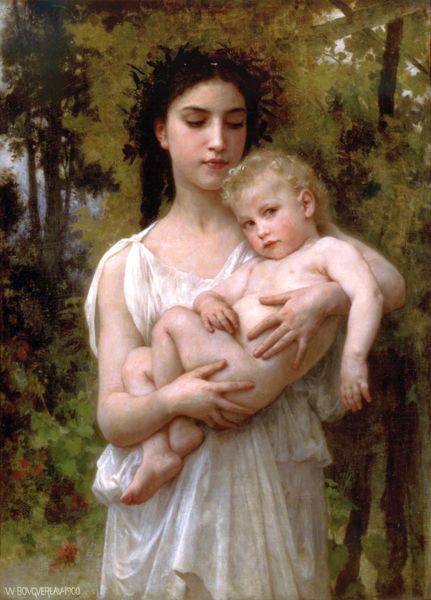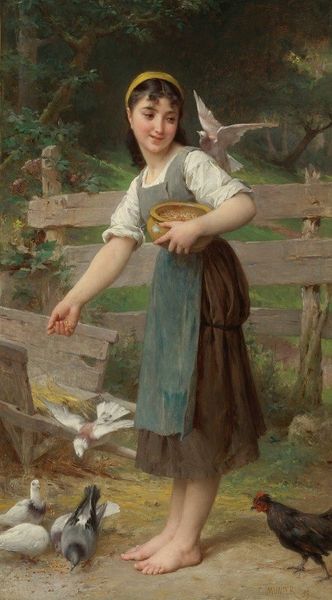
Copyright: Public Domain: Artvee
Editor: This is William Bouguereau’s "Frère et Soeur," painted in 1887 using oil on canvas. I’m struck by its soft, almost photographic realism and the way the light falls on the figures. How would you interpret the composition? Curator: I notice the subtle tension created by the differing textures. Observe the contrast between the smoothness of the children’s skin and the rougher fabric of the older sister's clothes, and how this interplay emphasizes the visual hierarchy within the piece. Are there noticeable planes of intersection that divide up the picture? Editor: Yes, definitely. I see it now—there’s a real emphasis on lines, in how the artist's choice of garments helps define this picture, and with his decision to frame it in nature. Is this common in Academic Art of this period? Curator: The structural composition leans into what we call genre-painting within the broader academic tradition of the period, an aesthetic in which both Neoclassicism and Romanticism coalesce. Genre painting involves realistic depictions of daily life which were popular for bourgeois audiences; by presenting these rural children within a very refined pictorial construction the artist flirts with many potential meanings simultaneously. How does the color impact the overall reading? Editor: It seems intentionally subdued; nothing too vibrant distracts from the figures. This highlights their form without the color becoming the dominant part of the experience. Curator: Precisely. The color functions structurally to reinforce the thematic content of care. It’s a very controlled use of elements. There is both a serenity in his formal control but simultaneously an ability to open up lines of questioning. Editor: I see that, it allows for a closer look at the subtle parts of the composition and gives it meaning! Curator: I am very glad we could study this canvas today.
Comments
No comments
Be the first to comment and join the conversation on the ultimate creative platform.
